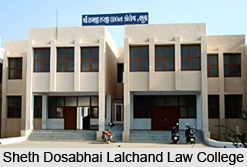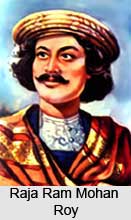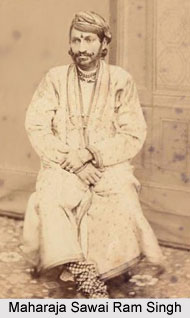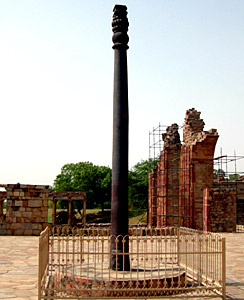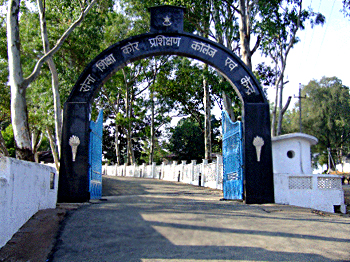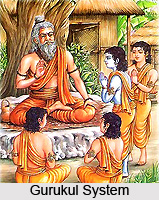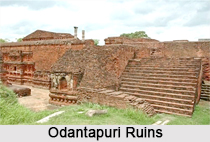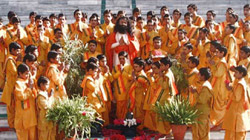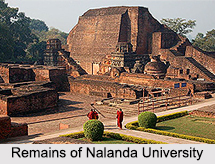 The Saddlers Commission introduced a new scheme of educational procedure in India. Moreover due to the Montague Chelmsford Reports of 1919,the department of education was transferred to the control of the popular ministers in the various provinces. The Central government ceased to take direct interest in the field of Educational reforms. The Department of Education in the Government of India was merged with the other departments. Above all the grant of five crores by the Central government was discontinued. The financial difficulties prevented the provincial governments from taking up ambitious schemes of educational expansion or improvement. Despite all these hazards here was a considerable development in the field of education mostly by the philanthropic effort. A number of commissions were created in order to develop the condition of education in India.
The Saddlers Commission introduced a new scheme of educational procedure in India. Moreover due to the Montague Chelmsford Reports of 1919,the department of education was transferred to the control of the popular ministers in the various provinces. The Central government ceased to take direct interest in the field of Educational reforms. The Department of Education in the Government of India was merged with the other departments. Above all the grant of five crores by the Central government was discontinued. The financial difficulties prevented the provincial governments from taking up ambitious schemes of educational expansion or improvement. Despite all these hazards here was a considerable development in the field of education mostly by the philanthropic effort. A number of commissions were created in order to develop the condition of education in India.
The Hartog Committee, 1929
The quantitative increase of the education subsequently reduced the quality of the education provided in the Indian schools, colleges and universities. There was a continuous dissatisfaction about the entire system and the procedure of education. The Indian Statutory Commission appointed a Commission to survey into the whole system. After a prolonged review the Hartog Committee submitted its report. The Hartog Committee emphasized primarily on the national importance of the primary education. Instead of expansion of the education the commission recommended for the consolidation and the improvements of the education procedure. For secondary education the commission reported that the system was dominated bys the Matriculation examination. As a result many undeserving students considered it the path to the University education. As a result the education system was hampered. The commission therefore recommended for the selective system of admission. Criticizing the policy of University education it recommended improvement of the university work so s that sit could provide proper instructions to the students.
Wardha Schemes of basic education
The Government of India Act1935 introduced the provincial autonomy and popular cane into power in seven provinces. The ministries started functioning from the year 1937. The Congress party sought to devise a national scheme of education for the country. In 1937,Mahatma Gandhi proposed for the scheme of basic education in his paper "The Harijan". This scheme of basic education was known as Wardha schemes of basic education. The main principle the basic education was learning through activity. The Zakir Hussain committee worked out the details of the scheme of basic education. Moreover the committee also planned for the detailed syllabi for a number of crafts. The committee also made suggestions for the training of the teachers, supervision, administration and examination. The core the basic education scheme was manual productive work. The scheme of basic education envisaged a seven-year course in vernacular languages. The outbreak of the war in1939 and the resignation of Congress Ministries led to the postponement of the scheme.
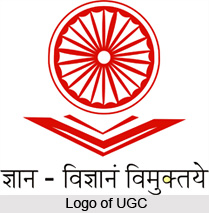 Sergeant Plan Education
In 1944 the Central Advisory Board of Education drew up a national scheme of education popularly known as the Sergeant plan. The scheme was named after Sir John Sergeant, who was the educational Advisor to the Government of India. The Sergeant plans recommended the junior and the basic level of education. The plan at the same time envisaged the introduction of universal free and compulsory education for the children between the ages of 6 to 11 years. Moreover the sergeant scheme also recommended for the school courses to the children between the age groups of 11 and 17. According to the plan the High schools would be of two kinds - academic and the technical or vocational. However the Sergeant plan also recommended the abolition of the Intermediate course and the addition of any extra year at the high schools and the college stage. The Sergeant scheme envisaged a forty years educational reconstruction plan for the country.
Sergeant Plan Education
In 1944 the Central Advisory Board of Education drew up a national scheme of education popularly known as the Sergeant plan. The scheme was named after Sir John Sergeant, who was the educational Advisor to the Government of India. The Sergeant plans recommended the junior and the basic level of education. The plan at the same time envisaged the introduction of universal free and compulsory education for the children between the ages of 6 to 11 years. Moreover the sergeant scheme also recommended for the school courses to the children between the age groups of 11 and 17. According to the plan the High schools would be of two kinds - academic and the technical or vocational. However the Sergeant plan also recommended the abolition of the Intermediate course and the addition of any extra year at the high schools and the college stage. The Sergeant scheme envisaged a forty years educational reconstruction plan for the country.
Radhakrishnan Committee
In November 1948 the government of India appointed a commission under the chairmanship of Dr. Radhakrishnan to submit report on the university education and to suggest for the improvements of the universities. The important recommendations made by the Radhakrishnan committee were submitted in August 1949. The commission recommended for a twelve years of pre university educational course. According the Commission the working days in the university should not be less than180 in the years exclusive of the examination days. The commission proposed for a strategy of higher education. The Higher Education proposed by the Commission should have three main objectives: General education, Liberal education and the Occupational education. More emphasis should be given on the subjects like Agriculture, Commerce, education, Engineering, technology, Medicine and Law. Important measures should be taken to improve the condition and standard of the existing engineering and the technical colleges. The Commission declared that only the university Degree would not be considered as the essential eligibility for the administrative services. The scale of pay of the university teachers should be increased and the university grants commission should be set up to look after the university education ins the country.
University Grants Commission
Prior to the recommendations of the Radhakrishnan Commission, the University Grants Commission was constituted in1953. The Commission was given an autonomous statutory status by an Act of Parliament in 1956. The Commission was principally entrusted with the charge of the matters related to the education. This included the determination and co-ordination of the standard and the facilities for study. The Commission was asked to make a thorough research about theses matters. The central government annually places at the disposal of the University Grants Commission adequate funds. The funds were required to implement the new development schemes.
 Kothari Education Commission
To review the national condition of education and to plan developmental schemes for the education, an Education Commission was appointed by the government of India under the chairmanship of Dr. S. Kothari in July 1964. The Kothari Commission was also instructed to advise the government about the principles and policies to be adopted for the development of the education. The Commission recognized that education and research were crucial to the entire development and progress of socio-economic and the cultural progress of the country. At the same time the commission also condemned the rigidity of the existing system of education. The commission recommended for the introduction of the work experience and the social services as the integral part of the general education. Emphasis was given on the moral education, which could inculcate a sense of social responsibility. The commission also recommended Vocationalisation of the secondary education and strengthening the centers of advanced study. To set up the universities providing education of international standard was recommended by the Commission.
Kothari Education Commission
To review the national condition of education and to plan developmental schemes for the education, an Education Commission was appointed by the government of India under the chairmanship of Dr. S. Kothari in July 1964. The Kothari Commission was also instructed to advise the government about the principles and policies to be adopted for the development of the education. The Commission recognized that education and research were crucial to the entire development and progress of socio-economic and the cultural progress of the country. At the same time the commission also condemned the rigidity of the existing system of education. The commission recommended for the introduction of the work experience and the social services as the integral part of the general education. Emphasis was given on the moral education, which could inculcate a sense of social responsibility. The commission also recommended Vocationalisation of the secondary education and strengthening the centers of advanced study. To set up the universities providing education of international standard was recommended by the Commission.
Apart from this Commission, there was National Policy on education and New Education Policy, which were appointed by the Government of India with the aim to develop the standard and the condition of education in India.

